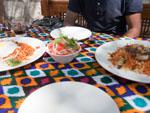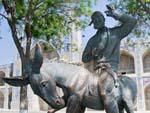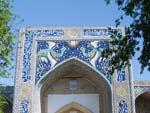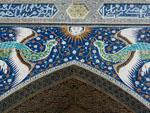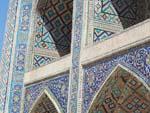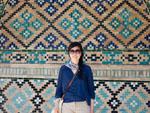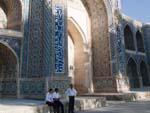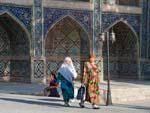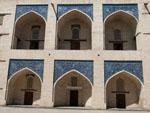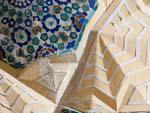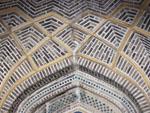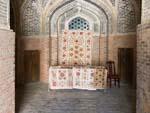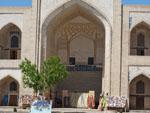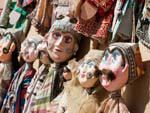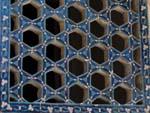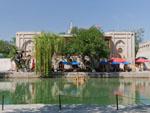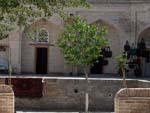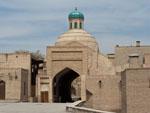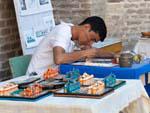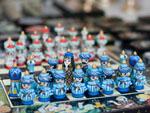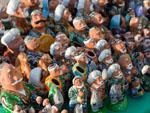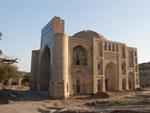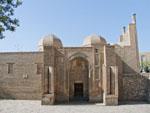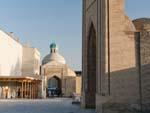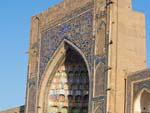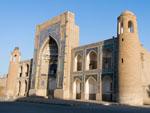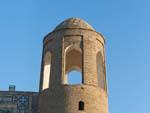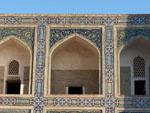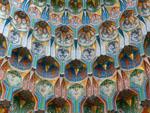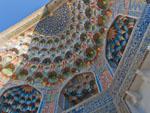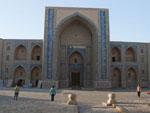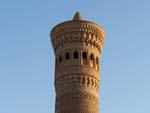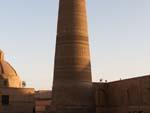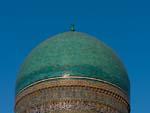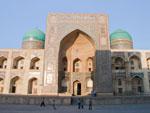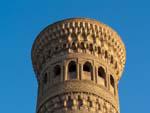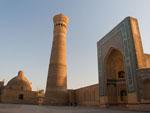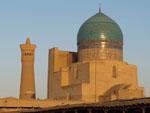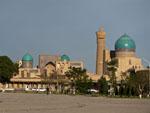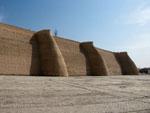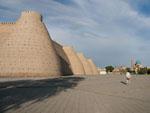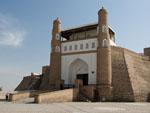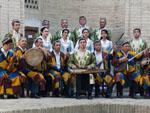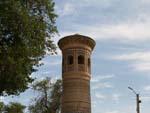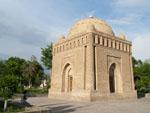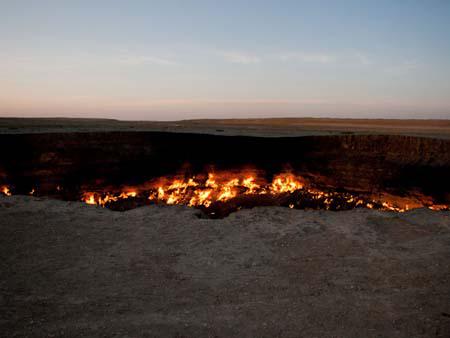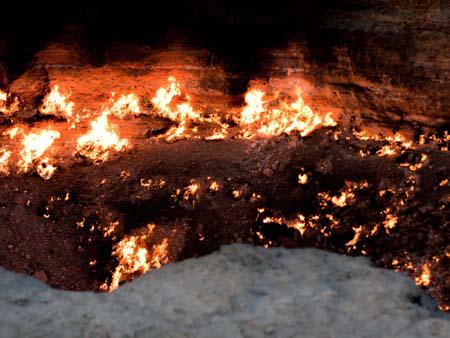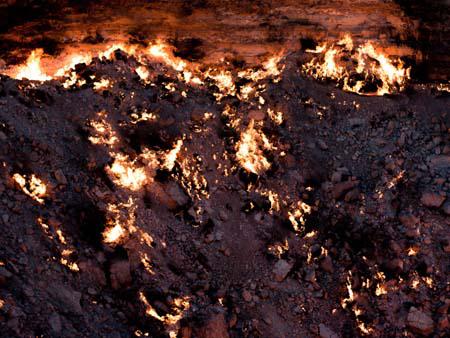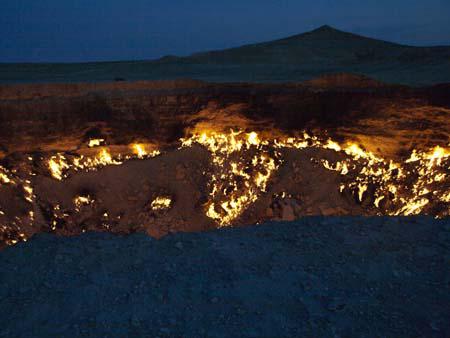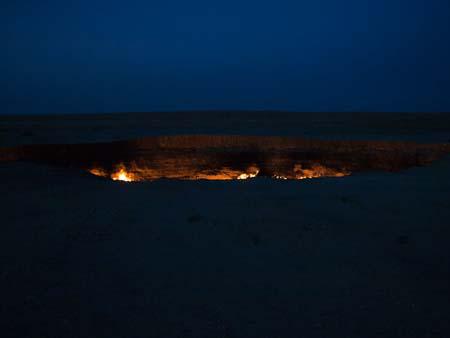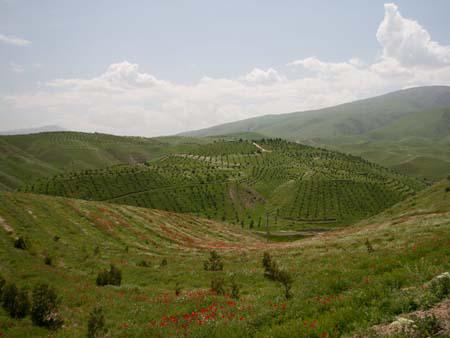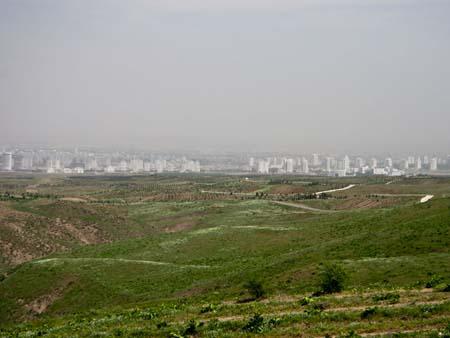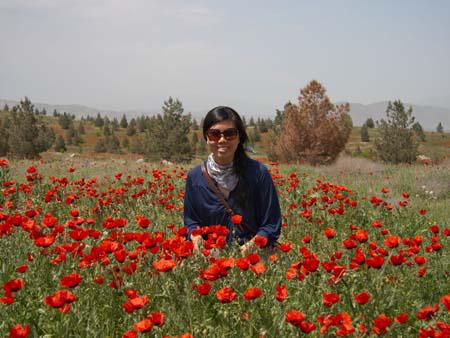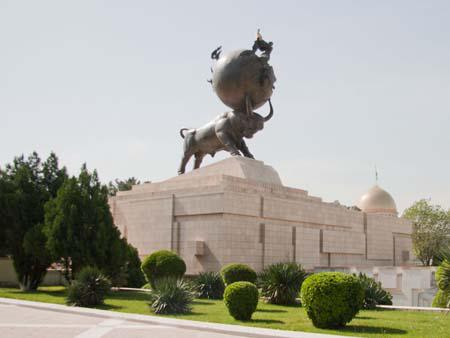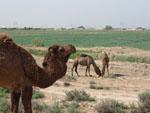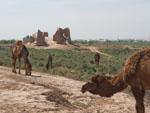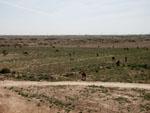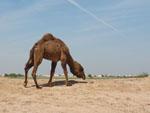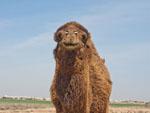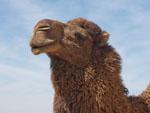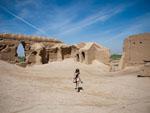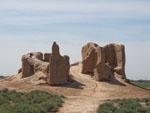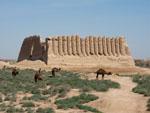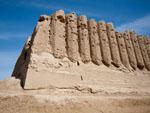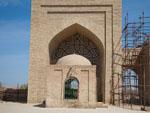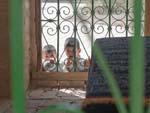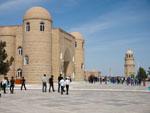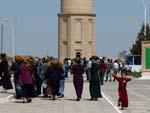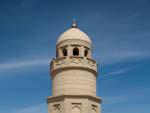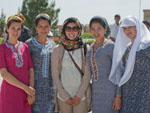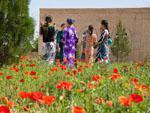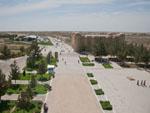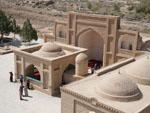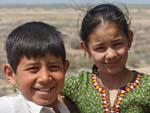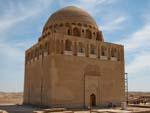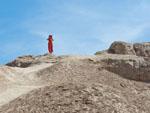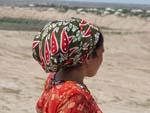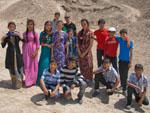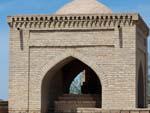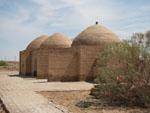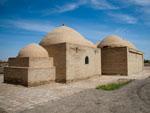After catching the overnight train from Ashgabat to Turkmenabat (which was really quite comfortable and pleasant), we headed to the border town of Farab. There we departed Turkmenistan and crossed the border to Uzbekistan. The whole process took about three hours, which was about half the time it took to cross from Iran to Turkmenistan! The border crossing process is an experience in itself, as you have to fill out a number of forms which are in the local language (no English, but thank goodness there were examples available), declare all your currency, be examined by a doctor, and so on.
We caught a shared taxi from the Uzbekistan border town to Bukhara, our first destination. It was about a hundred kilometres away however the taxi drivers wouldn’t negotiate with us, and we ended up having to pay US$20 each to Bukhara, which seemed to be the going rate according to the Lonely Planet. However, we were packed in with two other adults, the driver and a teenage girl so it wasn’t the most comfortable of rides! There seems to be a separate ‘tourist rate’ for taxi drivers in Uzbekistan, and they don’t seem to budge on their rates.
In Bukhara we stayed at a lovely B&B run by an Uzbek family (Medina & Illyos). It was US$10 for each of us, which included a hearty breakfast. Location wise it was close to all the main sights so we spent the afternoon wandering around Lyabi Hauz, a plaza surrounding a pond where we had lunch (plov, a rice dish with carrot and lamb, and laughman, a noodle dish). The plaza is bordered by two beautiful medressas (Nadir Divanbegi and Kukeldash Medressa), the Nadir Divanbegi Khanaka building and nearby Taki Sarrafon bazaar. Probably the most popular photographed in the plaza is the statue of Hoja Nasruddin, a likeable Sufi myth-like man on his donkey (who features in a lot of the Bukhara artwork and handicrafts). We spent the late afternoon sunlight exploring and photographing the Kalon Minaret and Mosque and the beautiful Ulugbek Medrassa and opposing Abdul Aziz Khan Medressa.
The following morning we headed to the Ark which unfortunately was closed. Only a few days earlier some of the wall had collapsed and the complex was being repaired. We then headed to Fayzulla House where we spent a few hours exploring the former house of Bukhara’s famous governors, Fayzulla Khojaev who worked with the Bolsheviks and led the overthrow of the Khan. Afterwards, we headed back to Lyabi Hauz for some lunch before searching for one of two of the last synagogues in Bukhara. We found one which was under restoration. Spent a bit of time wandering around wider Bukhara – with the intent of going to the Farmer’s Market (for fruit) and Asaka Bank.
We enjoyed Bukhara, it was a peaceful town, great for exploring by foot and very traveller friendly.




































































































